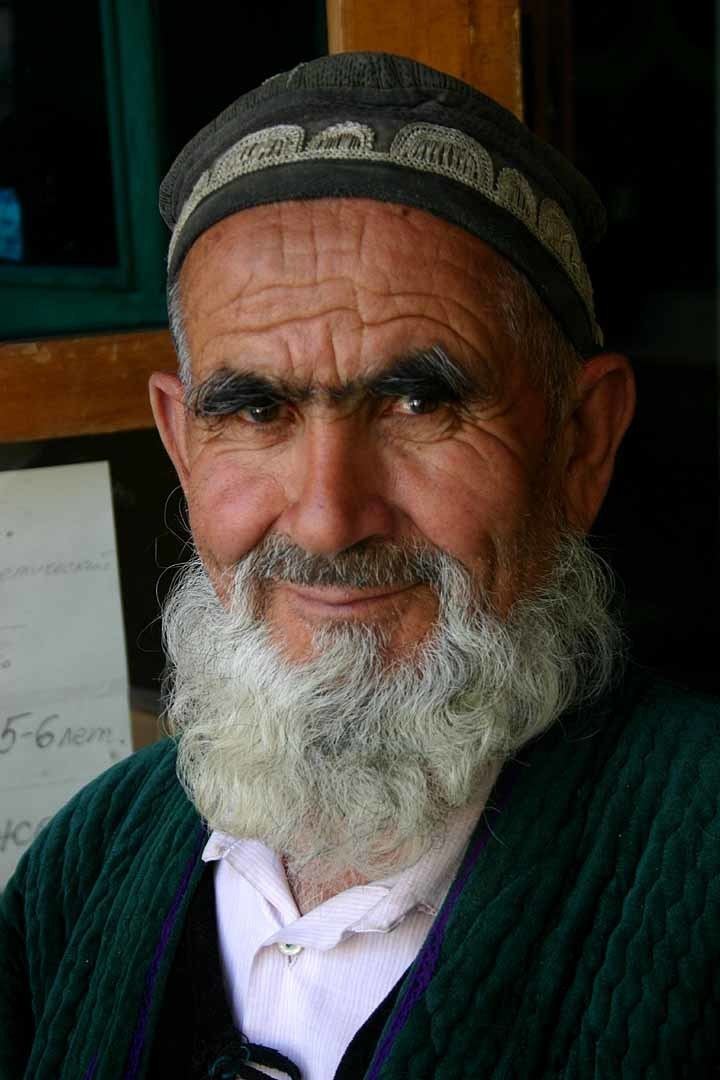 | ||
The Demographics of Tajikistan is about the demographic features of the population of Tajikistan, including population growth, population density, ethnicity, education level, health, economic status, religious affiliations, and other aspects of the population.
Contents
Demographic trends
Tajikistan's main ethnic group are the Tajiks Persians, with minorities such as the Uzbeks and Kyrgyz, and a small Russian minority. Because not everyone in Tajikistan is an ethnic Tajik, the non-Tajik citizens of the country are referred to as Tajikistani. The official nationality of any person from Tajikistan is a Tajikistani, while the ethnic Tajik majority simply call themselves Tajik.
Contemporary Tajiks are an Iranian people and ethnic Persians. In particular, they are descended from ancient Eastern Iranian peoples of Central Asia, such as the Soghdians and the Bactrians, with an admixture of Western Iranian Persians as well as non-Iranian peoples.
Until the 20th century, people in the region used two types of distinction to identify themselves: way of life - either nomadic or sedentary - and place of residence. By the late nineteenth century, the Tajik and Uzbek peoples, who had lived in proximity for centuries and often used each other's languages, did not perceive themselves as two distinct nationalities. The modern labels were imposed artificially when Central Asia was divided into five Soviet republics in the 1920s.
Historically, Tajikistan and Uzbekistan were also home to Bukharan Jews, who trace their ancestry to the Lost Tribes of Israel taken captive by the Babylonians in the 7th century BC, but almost no Bukharian Jews are left in Tajikistan.
CIA World Factbook demographic statistics
The following demographic statistics are from the CIA World Factbook, unless otherwise indicated.
Ethnic groups
Ethnic makeup according to the population censuses from 1926 to 2000 (in thousands)
Note: The category Tajiks also includes approximately 135,000 ethnic Pamiris, of which 65% are Shughni speakers, 13% are Rushani speakers, 12% speak Wakhi, 5% are Bartangi speakers, 3% are Yazgulyami speakers, 1.5% speak Khufi, and 0.8% are Ishkashimi speakers. In addition there are 5,000 speakers of Yagnobi. According to the 2000 census, excluding the people whose native languages are Pamiri or Yagnobi, Tajiks account for 77.6% of the population.
Languages
Several dialects of Persian (Central Asian dialects of Persian) are spoken in Tajikistan and it is its official language (officially referred to as Tajik). Russian is widely used in both government and business. The different ethnic minorities speak different languages, for instance Uzbek Turkmen, Kyrgyz and Khowar. In the Gorno-Badakhshan Autonomous Province, Shughni as well as other Pamir languages are spoken. In the northern Yaghnob valley, the Yaghnobi language is still spoken.
Religion
Population
7,349,145 (2009 est.)
8,610,000 (2015)
Age structure
0–14 years: 34.3% (male 1,282,681/female 1,238,607)
15–64 years: 62.1% (male 2,260,552/female 2,303,034)
65 years and over: 3.6% (male 112,334/female 151,937) (2009 est.)
Population growth rate
1.88% (2009 est.)
2.21% (2013-2014 est.) (source:www.stat.tj)Net migration rate
-1.28 migrant(s)/1,000 population (2009 est.)
Sex ratio
at birth: 1.05 male(s)/female
under 15 years: 1.04 male(s)/female
15–64 years: 0.98 male(s)/female
65 years and over: 0.74 male(s)/female
total population: 0.99 male(s)/female (2009 est.)
Life expectancy at birth
total population: 65.33 years
male: 62.29 years
female: 68.52 years (2009 est.)
Education
Education is required through high school (12 years of schooling) but completion rate is under 90%;
Literacy
definition: age 15 and over can read and write
total population: 99.5%
male: 99.7%
female: 99.2% (2000 census)
Fertility Rate (The Demographic Health Survey)
Fertility Rate (TFR) (Wanted Fertility Rate) and CBR (Crude Birth Rate):
